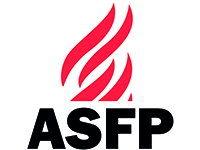Fire protection in buildings can be a more complicated process than it first appears. Product manufacturers go through the hoop to prove the relevance of their products and the competence of the installer has always been critical for successful application. This is why, comments the Association for Specialist Fire Protection (ASFP), all its installer members are required to be third party certificated in accordance with recognised schemes operating under the auspices of UKAS, the UK Accreditation Service. The matter is non-negotiable!
According to the Association, the UK is suffering from an unfettered plethora of questionable actions from self-promoting, self-inspecting suppliers/applicators who are potentially undermining the foundations for future fire safety in buildings.
The ASFP points to the recently broadcast TV programme advising that ordinary timber doors could be converted into fire doors by the simple application of an intumescent coating to the surface. The statement was compounded by the implication; ‘Why buy an expensive fire door?’
The answer is very clear, says the Association. A reliable fire door will have been tested in a standardised manner by a recognised fire test laboratory. The fire test report will limit the application of the data to the tested construction without willy-nilly extension to all and sundry doors. It is critical, says the ASFP, to recognise that the test is on the entire door system, including the fittings and fixings, the door frame, the abutments and the physical dimensions of the entire door system. We must call a halt to the unqualified application of intumescent coatings to any old door and strictly observe the limitations of the field of application certificate for any products that may have been tested on specific door assemblies. Likewise, the surfaces of rooms and routes for means of escape in buildings are subject to tested requirements in Building Regulations Approved Document B, ranging from Class 4 to Class 1/ Class 0.
Yet the ASFP has encountered various situations where suppliers have encouraged purchasers to apply’ intumescent wallpaper’ to a variety of surfaces, without regard to the limitations of the field of application arising from any fire test report. In other words, they are playing with people’s lives for personal profit. Reputable suppliers will know that surfaces can be upgraded, but the results will depend on the materials, substrates and exposure of the surface to be treated.
The ASFP provides useful advice for enhancing the fire performance of surfaces in buildings in its free ‘Orange Book’ entitled ‘Guidance on the classification for the reaction to fire performance of fire retardant coating systems’, which can be down loaded without charge from www.asfp.org.uk/publications
Reputable fire protection products should only be applied by reputable installers with independent third party certification. First party certification practices based on non-accredited arrangements should not be considered as a viable alternative. All our lives are threatened by those who give incomplete advice, or misapply data with limited fields of applications. Be on your guard. Lives could depend on it!
Beware Ill Advised Application Guidance!
| T | + 44 (0)24 76 935412 |
|---|---|
| E | info@asfp.org.uk |
| W | Visit Association for Specialist Fire Protection (ASFP)'s website |
| Specta House, Westwood Way, Westwood Business Park, Coventry, CV4 8HS |


